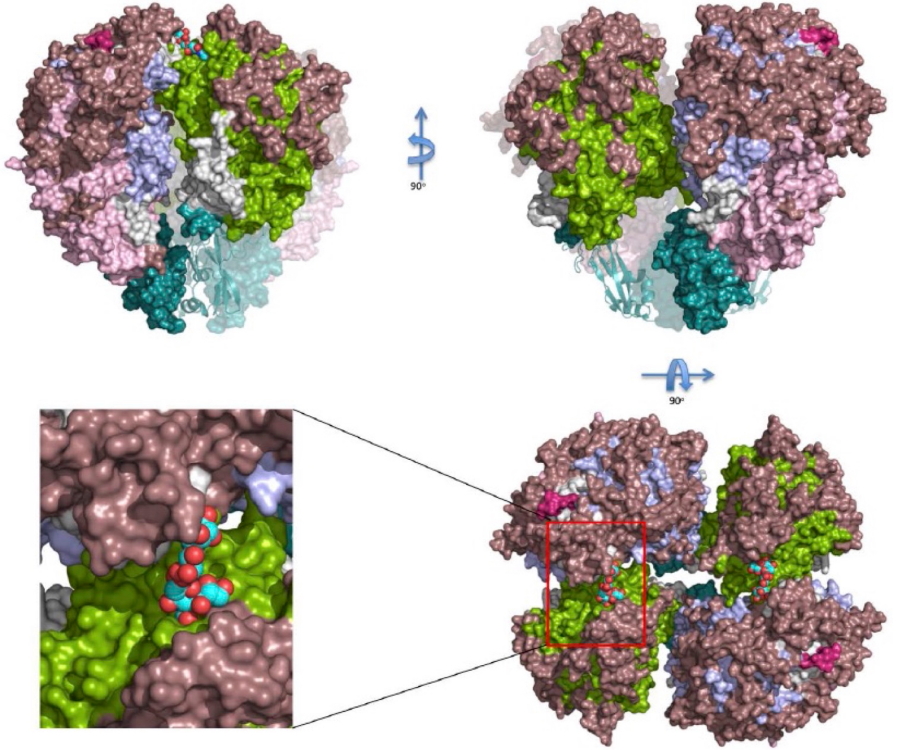| Authors |
David Vizarraga (1), Akihiro Kawamoto (2, 3), U. Matsumoto (4), Ramiro Illanes (1), Rosa Pérez-Luque (1), Jesús Martín (1), Rocco Mazzolini (5), Paula Bierge (6), Oscar Q. Pich (6, 7), Mateu Espasa (8), Isabel Sanfeliu (8), Juliana Esperalba (9), Miguel Fernández-Huerta (9), Margot P. Scheffer (10), Jaume Pinyol (7), Achilleas S. Frangakis (10), Maria Lluch-Senar (5), Shigetarou Mori (11), Keigo Shibayama (11), Tsuyoshi Kenri (11), Takayuki Kato (2, 3), Keiichi Namba (2, 12, 13), Ignacio Fita, Makoto Miyata (4, 14), David Aparicio (1) - Instituto de Biología Molecular de Barcelona (IBMB-CSIC), Parc Científic de Barcelona, Baldiri Reixac 10, 08028, Barcelona, Spain.
- Graduate School of Frontier Biosciences, Osaka University, 1-3 Yamadaoka, Suita, Osaka, 565-0871, Japan.
- Institute for Protein Research, Osaka University, 3-2 Yamadaoka, Suita, Osaka, 565-0871, Japan.
- Graduate School of Science, Osaka City University, Osaka, 558-8585, Japan.
- EMBL/CRG Systems Biology Research Unit, Centre for Genomic Regulation (CRG), The Barcelona Institute of Science and Technology, Dr Aiguader 88, 08003, Barcelona, Spain.
- Laboratori de Recerca en Microbiologia i Malalties Infeccioses, Institut d’Investigació i Innovació Parc Taulí (I3PT), Hospital Universitari Parc Taulí, Universitat Autònoma de Barcelona, 08208, Sabadell, Spain.
- Departament de Bioquímica i Biologia Molecular, Institut de Biotecnologia i Biomedicina, Universitat Autònoma de Barcelona, 08193, Bellaterra, Barcelona, Spain.
- Departament de Microbiologia, Hospital Universitari Parc Taulí, Universitat Autònoma de Barcelona, 08208, Sabadell, Spain.
- Departament de Microbiologia, Hospital Universitari Vall d´Hebron, Universitat Autònoma de Barcelona, 08035, Barcelona, Spain.
- Buchmann Institute for Molecular Life Sciences, Max-von-Laue Str. 15, 60438, Frankfurt, Germany.
- Department of Bacteriology II, National Institute of Infectious Diseases, Tokyo, Japan.
- RIKEN Center for Biosystems Dynamics Research and SPring-8 Center, 1-3 Yamadaoka, Suita, Osaka, 565-0871, Japan.
- JEOL YOKOGUSHI Research Alliance Laboratories, Osaka University, 1-3 Yamadaoka, Suita, Osaka, 565-0871, Japan.
- The OCU Advanced Research Institute for Natural Science and Technology (OCARINA), Osaka City University, Osaka, 558-8585, Japan.
|

